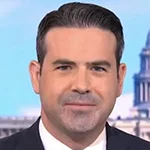Westhampton Beach has disavowed any opposition to erection of a Jewish religious boundary -- splitting from Southampton and Quogue which continue the battle.
WHB attorney Brian Sokoloff repeatedly told Judge Kathleen Tomlinson at a conference Feb. 26 that the village had never said one word in opposition to the planned eruv boundary and should not be a party to any litigation involving eruvim in the Hamptons.
|
|
Lawyers for Southampton and Quogue, which are also the targets of federal and state lawsuits by the East End Eruv Assn., vowed to continue their battle against eruvim, pointing to town laws that restrict what can go on utility poles and saying allowing eruv markers would "open the floodgates" to all sorts of signs on poles.
Whether such laws are valid is a case that is before New York State courts and could take some months for a decision.
WHB, which has allowed various signs on utility poles including those for the St. Patrick’s Day parade, has never passed laws similar to those enacted by SH and Quogue.
The 6,083-word discussion before Judge Tomlinson, which covers many aspects of the dispute that have been hidden from public view until now, is in this link.
Previous coverage of the discussion was on May 5, "Judge Worries about Slow Pace of Eruv Litigation," and May 15, "Southampton Raps Eruv Battle as Costly, Wasteful."
WHB Letter "Says Nothing"
Sokoloff told Judge Tomlinson: "The plaintiff’s sole evidence of what WHB allegedly did to prevent them from putting up an eruv is one letter that says nothing. It doesn’t say, you’re prohibited from doing so. It doesn’t say, you will be prosecuted if you do so. It says nothing at all."
Sokoloff said it was a "farce" that WHB should be named in a federal litigation "who never said you can’t put it up, who never enacted a law that would cover it…"
"I defy the plaintiffs to point to anything that WHB ever did to prevent them from putting up an eruv," he said.
JPOE Sued WHB, EEEA, LIPA and Verizon
The legal history of the battle, which has cost the towns and Jewish People Opposed to the Eruv more than $1 million so far in outside legal costs (plus internal legal costs), is that JPOE in 2011 asked U.S. District Court for an injunction to block an eruv in WHB. It also filed suit on July 30, 2012, v. WHB, EEEA, Verizon and LIPA seeking to block the eruv.
Sokoloff is correct in saying WHB never publicly opposed the eruv but citizens wonder why not. Former Mayor Conrad Teller said several times that "90-95%" of residents were opposed to the religious markers that convert public land into the "private domain" of the Orthodox.
The enclosed area becomes the "home" of the observant who are supposed to share a common dining table. A symbolic piece of bread is kept someplace in the eruv for this purpose and is changed once a year.
Opponents are saying that public property should not be converted to religious use but the EEEA says an eruv falls under the right of freedom of religion guaranteed by the Constitution.
Supporters of eruvim say that if SH and Quogue are able to block erection of eruvim in their communities it will jeopardize the more than 70 eruvim in New York state and hundreds throughout the U.S.
The issue has yet to go before the U.S. Supreme Court. It has not responded to attempts to place the issue before it. A Federal Court in Tenafly, N.J., in 2001 ordered an eruv taken down, saying public utility poles should not be permanently converted to religious use. But an Appeals Court overturned the decision, saying Tenafly had allowed directional signs, student banners and other materials on the poles and could not therefore deny the lechi markers for an eruv.
Is There an Eruv In WHB?
Sokoloff, in discussing the WHB eruv, said, "There’s an eruv up, or so the plaintiffs say—there’s an eruv in WHB today."
The remark, "or so the plaintiffs say," alludes to the fact that no one, including the Southampton Press and local residents, have been able to find eruv markers on any of the 46 poles licensed by Verizon and LIPA for such use by the EEEA. Eruv markers commonly are black strips of plastic that go from the bottom to near the tops of utility poles. Other types of markers can also be used.
The Southampton Press examined all of the poles and found no evidence of eruv markers. The Hampton Synagogue website says, "The Eruv Is Up."
EEEA has said it will not reveal the exact locations of the eruv markers because it fears vandals may remove some of them. Eruvim have to be 100% secure in order to be valid.



 Husch Blackwell Strategies has added FleishmanHillard alum Michael Slatin as a principal in its public affairs group.
Husch Blackwell Strategies has added FleishmanHillard alum Michael Slatin as a principal in its public affairs group. Rory Cooper, a veteran Republican operative and policy specialist, has joined Teneo’s Washington office as senior managing director in its strategy & communications practice.
Rory Cooper, a veteran Republican operative and policy specialist, has joined Teneo’s Washington office as senior managing director in its strategy & communications practice. Brian Fallon, who served as national press secretary for Hillary Clinton’s 2016 presidential run, is signing on next month as Vice President’s Kamala Harris’ campaign communications director.
Brian Fallon, who served as national press secretary for Hillary Clinton’s 2016 presidential run, is signing on next month as Vice President’s Kamala Harris’ campaign communications director. TikTok is nothing more than a Chinese propaganda tool that poses “a grave threat to America’s national security and, in particular, impressionable children and young adults,” say two Congressmen who want the platform registered as a foreign agent.
TikTok is nothing more than a Chinese propaganda tool that poses “a grave threat to America’s national security and, in particular, impressionable children and young adults,” say two Congressmen who want the platform registered as a foreign agent. Public Strategies Washington has added Abbie Sorrendino, a former aide to now Senate Majority Leader Chuck Schumer.
Public Strategies Washington has added Abbie Sorrendino, a former aide to now Senate Majority Leader Chuck Schumer.


 Have a comment? Send it to
Have a comment? Send it to 
No comments have been submitted for this story yet.